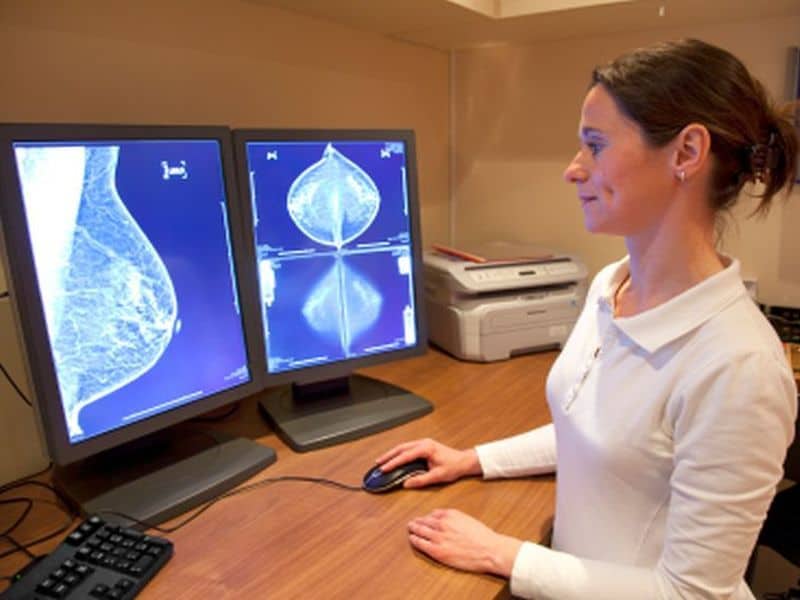WEDNESDAY, Dec. 30, 2020 (HealthDay News) — New mammogram-based risk measures based on brightness (Cirrocumulus) and texture (Cirrus) improve breast cancer risk prediction beyond an established measure of mammographic density (Cumulus), according to a study recently published in the International Journal of Cancer.
Tuong L. Nguyen, Ph.D., from the University of Melbourne in Australia, and colleagues examined risk prediction with Cirrocumulus and Cirrus fitted together and with Cumulus using data from three studies consisting of 168 interval cases and 498 matched controls; 422 screen-detected cases and 1,197 matched controls; and 354 younger-diagnosis cases and 944 controls frequency-matched for age at mammogram. Measure-specific risk gradients were estimated as the change in odds per standard deviation of controls after adjustment for age and body mass index (OPERA); the area under the receiver operating characteristic curve (AUC) was also calculated.
The researchers found that for interval, screen-detected, and younger-diagnosis cancer risks, the best-fitting models involved Cumulus and Cirrus (OPERAs, 1.81 and 1.72, respectively), Cirrus and Cirrocumulus (OPERAs, 1.49 and 1.16, respectively), and Cirrus and Cirrocumulus (OPERAs, 1.70 and 1.46, respectively), with corresponding AUCs of 0.73, 0.63, and 0.72.
“Our new measures appear to be more strongly correlated with such causal factors than conventional mammographic density,” the authors write. “Our findings also demonstrate the potential for much improved and more etiologically relevant breast cancer risk prediction, by discovering new ways of extracting information on breast cancer risk from a mammogram.”
One author disclosed financial ties to Genetic Technologies.
Abstract/Full Text (subscription or payment may be required)
Copyright © 2020 HealthDay. All rights reserved.


